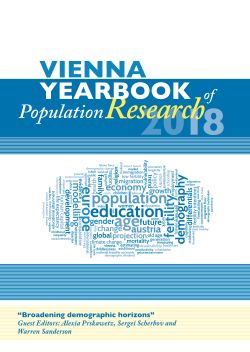
Vienna Yearbook of Population Research 2018, pp. 025-035, 2018/12/20
Broadening demographic horizons

I explore the application of probabilistic methods in demographic forecasting. Deterministic forecasts fail to account for the inherent uncertainty in demographic processes, which probabilistic approaches aim to address. By incorporating probabilities, these forecasts can provide a range of possible future outcomes rather than one single (or a few) predicted values, thereby offering a more comprehensive view of potential demographic changes. I discuss the advantages of probabilistic forecasting, such as its ability to quantify uncertainty and provide clearer communication of risks to policymakers and stakeholders. The paper reviews various probabilistic methods, including Bayesian models and expert elicitation, and illustrates their use in forecasting population size, age structure, and other demographic variables. Wolfgang Lutz and colleagues have made major contributions to the field of probabilistic population forecasting. Their pioneering work in the 1990s was important because it showed that probabilistic population forecasting is feasible. The deterministic world population forecasts of the Wittgenstein Centre, and the IPCC forecasts based on SSP scenarios will be much more useful and relevant for the user once they are formulated in probabilistic terms. Also, the link between education on the one hand and fertility, mortality, and migration on the other, should be modelled as a two-way causal process. The paper concludes that while probabilistic forecasts are more complex to produce and interpret, they significantly enhance the understanding of demographic trends and uncertainties. This is especially critical in contexts where demographic changes can have substantial social and economic impacts.
Keywords: Probabilistic forecast; Population projections; Two-way causality; Fertility impact on education; IPCC population forecast